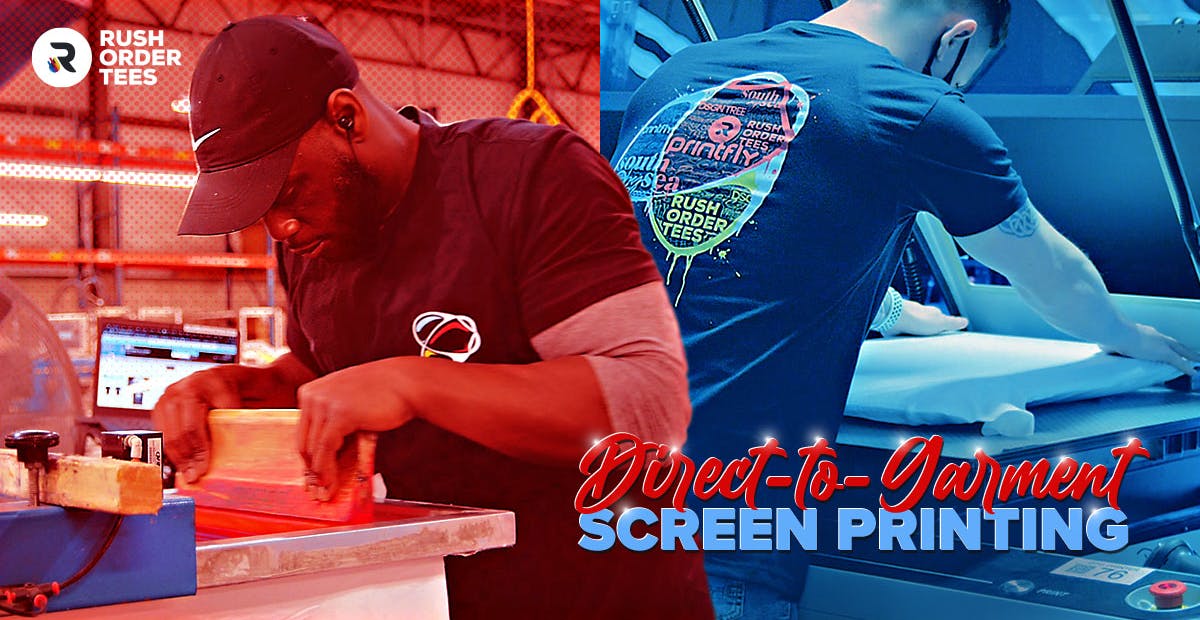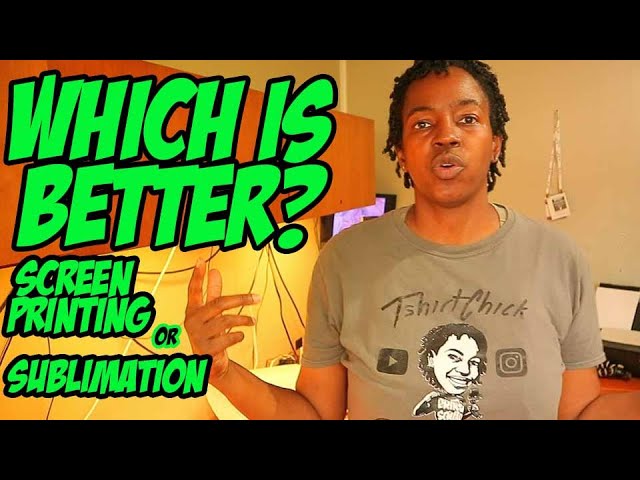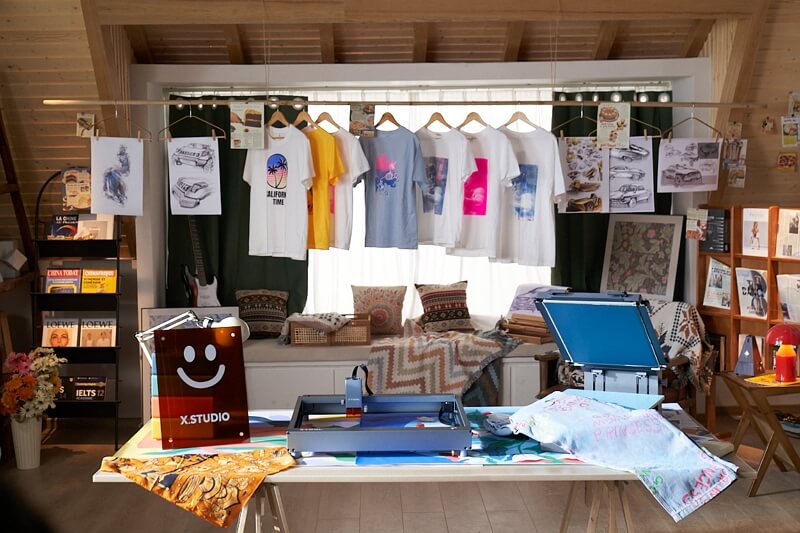Rumored Buzz on Tx Tees
Rumored Buzz on Tx Tees
Blog Article
Tx Tees Fundamentals Explained
Table of ContentsThe Of Tx TeesSome Ideas on Tx Tees You Should KnowUnknown Facts About Tx TeesWhat Does Tx Tees Do?Our Tx Tees PDFsSome Known Factual Statements About Tx Tees The Main Principles Of Tx Tees
Add up other costs, like the number of utilities it takes to run the store and the expense of ink and emulsion per style. Take the print below.The emulsion needs to just be a couple of cents given that you 'd just need to coat one screen for this task. Just how much should you charge per t shirt to make a revenue? Usually, printers attempt to make up to 45% earnings on a print task. Here's a table to help you determine that: overall cost per product percent of desired earnings as a decimal (instance:.25 or.45) revenue made per item per work Now allowed's speak about the earnings of DTF.

With DTF, you can print a handful of tee shirts, or just one. Utilize the same calculator as the area over to determine just how much earnings you would certainly use DTF transfers. Compare the prices and earnings to whichever technique talks finest to your configuration and procedure. Both screen printing and DTF have their niches worldwide.
Tx Tees Can Be Fun For Anyone
The most effective method to know? Ask about and see what print stores like yours are doing. screen printer. Try both out and see which you like far better
When you're selecting what kind of printing approach to make use of for printing your artwork designs on your garments, it's essential that you recognize the differences in between these 2 techniques so you can optimize results while decreasing costs. Screen printing is the most typically made use of strategy for publishing designs on textiles.
DTG printing is additionally called area or straight to garment printing because it publishes only what is needed rather than making a display as screen printers do. https://russellcostello796.wixsite.com/txtees02. Display printing functions by screen filler squeegee screen printing ink display mesh display, then transferring the photo to garment using heat and/or stress
The DTG printer utilizes unique dye-sublimation inks that are used right into a pre-designed picture by a digital printing system. The inks come to be component of the textile, allowing for dynamic colors and phenomenal information. It's additionally called place or straight to garment printing since it prints just what is required rather than making a screen as display printers do.
Tx Tees for Beginners
It's much faster - you can print a fullcolor picture in mins, as opposed to hours for display printing. Second, there's no established up time or costs entailed - you can print any type of design you like, without needing to develop a screen first. Third, there's no waste - due to the fact that screen printers screen print one style at a time, they have to evaluate each color independently.
The paper is very pricey and can only be used once. Once it's printed on, it has to be disposed of. - The preliminary acquisition cost is less than the ahead of time financial investment of DTG printers- You can publish multi-color layouts one screen each time as opposed to having to print each color independently like DTG printing.

Indicators on Tx Tees You Need To Know
Instead of using display mesh as screen printers do, dye sublimation printers make use of laser technology to transfer your pictures onto garments or paper. A heat process moves the color from its solid-state directly into the gas phase which subsequently merges it onto fabric substratums when they are rapidly heated up to high temperature levels under high pressure.
Sublimation printing is eco-friendly. It uses less water than screenprinting, and since it does not entail the use of linked here harmful solvents, it's risk-free for all kinds of apparel. The dye sublimation inks are additionally odor free when healed, unlike display printers that make use of dangerous chemicals during the display printing process that leave an undesirable smell.
They additionally conserve cash on costly equipment like exposure units because dye sublimation printers do not require a UV exposure unit or a flash treatment stove that is generally used in screen printing (custom screen printing). What is straight to garment printing (DTG Printing)? DTG printing is an electronic screenprinting procedure that publishes straight onto textile using specialized inkjet printers
All about Tx Tees
DTG printing uses lots of benefits over traditional screenprinting, including the capability to print photographic quality photos, better color vibrancy, and the ability to publish designs on darker textiles. DTG printers work by heating the fabric ink until it turns right into a gas. The gas then permeates the textile, bonding with the fibers to produce a permanent print.

Display printers merely prepare their screen after that begin publishing till they run out of product or ink.- There is a wide range of experienced display printers around the world, which can be useful for newbies. - It's a slower process - display printers typically need to wait for the ink to dry before they can publish the next shade- Display printers call for manual work, so there's a greater learning contour and it takes longer to produce a premium style- Screen printing isn't as precise as DTG printing, so you might obtain some "bleeding" of shades from one part of the picture onto another otherwise done effectively.
The Of Tx Tees
Instead of utilizing display mesh as screen printers do, dye sublimation printers make use of laser innovation to move your images onto garments or paper. A warm procedure transfers the color from its solid-state straight into the gas stage which in turn integrates it onto fabric substrates when they are rapidly heated to high temperatures under high pressure.
Sublimation printing is eco-friendly. It uses much less water than screenprinting, and since it does not entail the use of hazardous solvents, it's safe for all kinds of apparel. The dye sublimation inks are also odorless when healed, unlike display printers that utilize damaging chemicals throughout the screen printing procedure that leave behind an undesirable smell.
They also conserve cash on costly devices like direct exposure devices because dye sublimation printers do not require a UV exposure system or a flash remedy stove that is usually made use of in display printing. What is direct to garment printing (DTG Printing)? DTG printing is a digital screenprinting process that prints directly onto material utilizing specialized inkjet printers.
Examine This Report on Tx Tees
DTG printing uses lots of advantages over typical screenprinting, consisting of the capacity to publish photo high quality pictures, higher shade vibrancy, and the ability to publish styles on darker fabrics. DTG printers function by warming the textile ink until it becomes a gas. The gas then permeates the fabric, bonding with the fibers to create an irreversible print.
Report this page